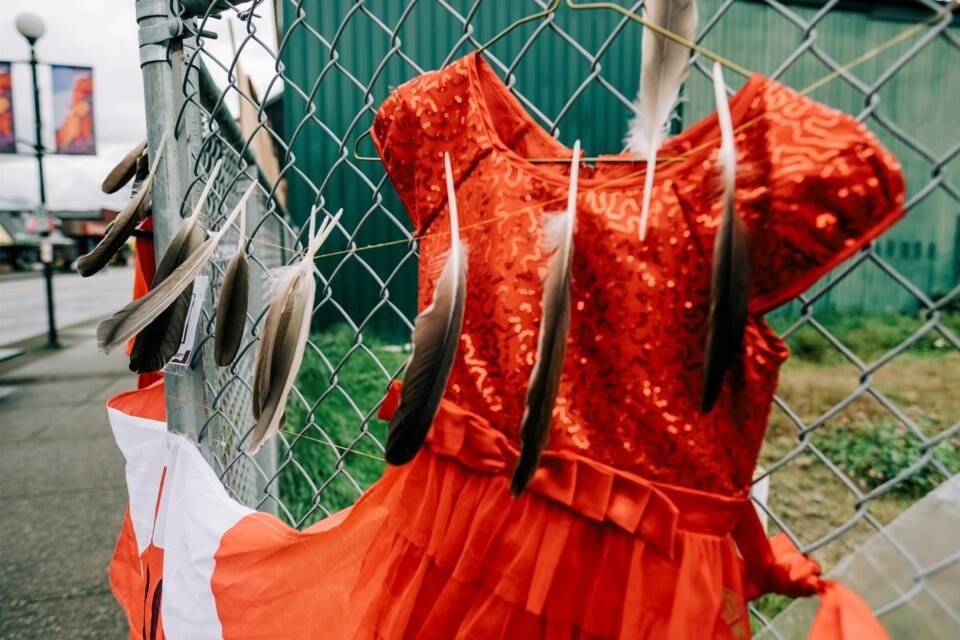It’s been 14 years since Canadian Métis artist Jaime Black hung red dresses in public spaces, raising awareness of the staggering number of Indigenous women missing and murdered across the country.
The striking exhibition has since transformed into a full-fledged movement, with an annual event each year that provokes thought and honour from the public. Red Dress Day has ballooned in scale, but its message still remains as clear as it did that spring of 2010.
“Red Dress Day is about raising awareness and recognition of violence against women, and honouring those who didn’t have a voice back then,” said səlilwətaɬ (Tsleil-Waututh Nation) elected councillor Charlene Aleck.
“It is an important day, but for First Nations communities it is especially significant because it relates to a lot of our ancestors and our relations. We are directly affected by our grandmothers and aunties being murdered, going missing, or even being mistreated,” she said.
Each year rallies and marches mark the event as communities call on the government to take more action, something that has gained even further momentum since a 2019 inquiry into missing and murdered Indigenous women pushed for more action to end the endemic violence.
The inquiry found that Indigenous women and girls were 12 times more likely to be murdered or go missing than those from any other demographic, and 16 times more likely to go missing. The final, 1,200-page report included 231 actions, or “calls for justice,” that need to be taken by governments and Canadians.
Locally, there are efforts being made from within First Nations communities to raise awareness on what the inquiry describes as gender-based genocide. In previous years the Tsleil-Waututh Nation in particular has held ceremonies, marches, public events and poetry readings.
“There’s been women’s groups, where women come and bring their red dress. We say our prayers and lay out mementos to give ourselves strength to move on,” said Aleck.
“The Red Dress movement really speaks to a lot of the work that the Tsleil-Waututh Nation does, in trying to heal the land in order to heal the people,” she added. “We’re so committed as a Nation to reviving our language, continuing our ceremonies and healing the land. With that we’re hoping to give our grandmother’s the voice that they didn’t have, to recognize the harm that was done to them and to heal.”
Each year the Tsleil-Waututh Nation also works in collaboration with the City of North Vancouver to bring about its Red Dress Day honouring ceremony, where the crowds gather at the Strength and Remembrance Pole in the plaza in front of North Vancouver RCMP detachment. This year the ceremony will take place May 3, from 11 a.m until noon.
“The biggest response that we’re hoping for with events like this is empathy,” said Aleck. “There needs to be more empathy, and that seeps into relationships: The relationship of our community and the relationship of our leadership. It’s that relationship that can help create change.”
Mina Kerr-Lazenby is the North Shore News’ Indigenous and civic affairs reporter. This reporting beat is made possible by the Local Journalism Initiative.



